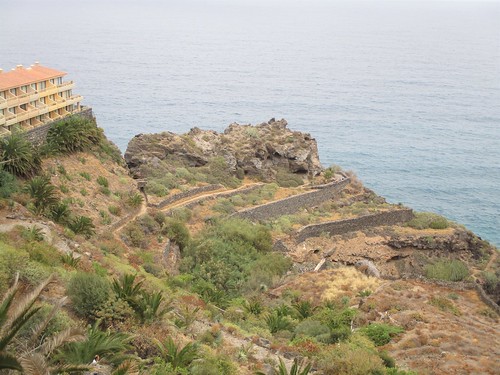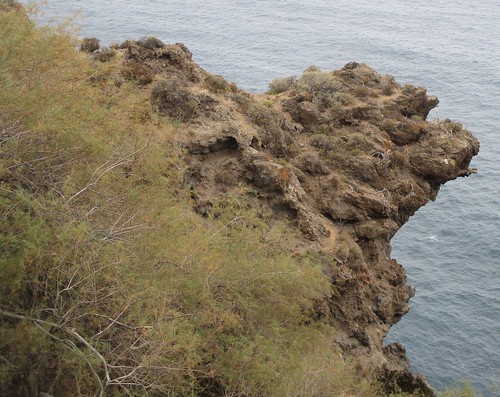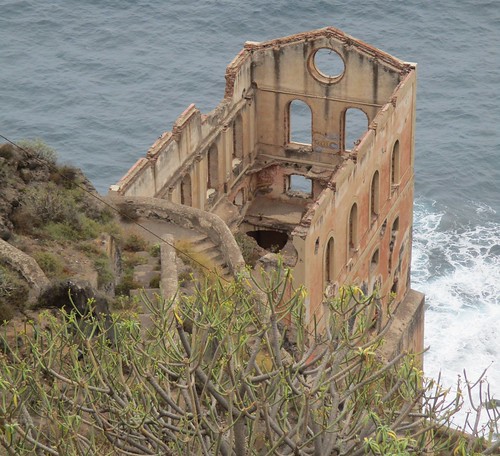
Foaming and thrashing around a series of beautifully sculpted spits of rock, the north coast sea of Tenerife demands attention. Centuries of powerful waves had crafted the impressive bay of Playa de los Roques in Los Realejos. The beach was sealed as notices warned of possible rock falls, that didn´t deter solo fishermen from taking up precarious perches over this beach and further along the Rambla de Castro walk.

A short bus ride from Puerto de la Cruz station had dropped me in a good position to start the two hour walk looking down from the entrance path behind the blue and white beacon of the Hotel Maritim. I realised I could have walked from El Burgado at the Loro Parque end of Puerto de la Cruz, the baseball stadium of the Marlins was a reliable indicator of my surroundings.


A steep, narrow track upwards through farming terraces led to a modern housing estate and a sharp right turn onto a pathway overlooking the sea. The opportunity to dip down and skirt along just above wave level was being taken by several groups of young walkers. The sheer scale and defiant nature of the isolated rocks told a tale of years of pounding to prise open clefts in the stacks.


The path looped down through a tight stone arch and round a narrow track that clung to the sturdy cliff. The apray from below added to the feeling of kinship with nature. Back up to the road level, helpful signs pointed onwards to the next interface of sea views. A couple of small streets around an old commercail centre allowed drivers some convenient parking before joining the route in mid flow. The next stage spread out in the distance as the cloudy sky and lush green cascade of plants gave evidence to the increased rain fall in this area. Low edging stones separated the route from the drop below, and wild birdscame and went into concealed caves.



Nearing the mirador of San Pedro, the circular viewing point stood out below just beyond a wooden bridge. History was etched into the Los Realejos coast, one of the most striking examples was the Gordejuela water pumping plant. Built in 1905, it housed the first steam engine to operate in Tenerife. Despite its exposure to the winds and waves of nature, people had been the worst causes of damage. Graffiti daubed over the walls and enlarged window frames gave it a spooky feel but the water pipes trailing up the steep hills showed that the building was made of sturdy stuff. Big waves continued to lick at the walls, not my idea of a remote playground, and the remotest type of urban art gallery.



A path leading up to the busy TF15 road and bus routes was closed off but just a short back track to the commercial centre and an upward stride connected me with Los Realejos bajo and the bus I was seeking. Los Realejos is a deep xlice into the north of Tenerife with the churches and ravines of Los Realejos Alto well worth a look.